Make connections that ACTUALLY convert! Download the ultimate event marketing guide to ensure your brand can get the best ROI on your next event.

Events are expensive, exhausting and have no clear metric to determine whether or not you’re achieving those vital returns on investment. Why, then, are there SO many events?!
While our digital lives increase each day – and while our digital communications continue to eclipse face-to-face networking – is there even a place for the traditional event format in our professional lives anymore? Are they effective? Are they efficient? Are they … (dare I say it?) … even worthwhile?
A majority of marketers (80 per cent) today attribute their company’s success to in-person event activations. Events aren’t just nice to have; they’re critical if you want to stay in the competition and thrive.
Many argue that the accessibility, convenience and speed of information dissemination through email, social media and instant messaging, has outpaced traditional modes of communications.
However, the truth is that virtual conversations still carry glaring limitations. The trust and rapport that one can build with in-person meetings are somehow impossible to replicate via online platforms, and I doubt whether a digital handshake will ever take the place of actual ones.
For many (and by ‘many’ I mean your frontline personnel responsible for acquiring new business and generating revenue), the face-to-face moments that events ensure are vital to bringing new opportunities further down the sales funnel. In an article published in Psychology Today states, ” 55 per cent of communication is body language, 38 per cent is the tone of voice, and 7 per cent is the actual words spoken.” And since communication is the bedrock of sales enquiries and informed decision making, face-to-face communication opportunities represent your most direct method of influencing purchasing and procurement behaviours.
All good CMOs worth their weight know that diversifying your communications channels to market is key to successful campaign engagement. An event is part of the vital marketing mix – and in particular, offers a very efficient model of solidifying relationships with your target audience. During events, you make it easy for potential clients, especially people who may not be part of your online communities and circles, to get to know about you and engage with your brand’s offering. In the landscape of A+D, effective face-to-face marketing at events can also mean a foot in the door to new projects, tenders or future partnerships. As marketing and business guru Seth Godin says, “What people really want is the ability to connect to each other, not to companies.”
In the A+D world, your future clientele attach a lot of value in being able to physically touch and feel products, an experience made possible during events (especially if you’re launching new products). In this transaction, authenticity and trust evidently influence the next step of the process: procurement. But, how can your marketing efforts up to this moment bring to affect your brand’s desired outcome?
Here’s how you can maximise on your relationship building before, during and after your next event: content marketing! Events are a huge expense for brands wanting to take their top messages and products to market. But they can also be one of the most high-yield endeavours your team can undertake with a prospective audience. But just like any form of communication, preparation is key. Omni-channel content marketing initiatives can offer you the best chance of ensuring that everyone understands your USP, that everyone is listening and, what’s more, that everyone is excited to come and pay you a visit!
The following guide takes you through how to prepare your communications networks before, during and after your event to achieve maximum ROI.
This guide is presented by C-GEN: the first and only dedicated content marketing agency for the design, architecture, building and development industries of Asia Pacific.
INDESIGN is on instagram
Follow @indesignlive
A searchable and comprehensive guide for specifying leading products and their suppliers
Keep up to date with the latest and greatest from our industry BFF's!

Now cooking and entertaining from his minimalist home kitchen designed around Gaggenau’s refined performance, Chef Wu brings professional craft into a calm and well-composed setting.

For a closer look behind the creative process, watch this video interview with Sebastian Nash, where he explores the making of King Living’s textile range – from fibre choices to design intent.
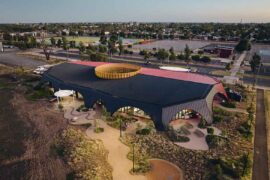
At the Munarra Centre for Regional Excellence on Yorta Yorta Country in Victoria, ARM Architecture and Milliken use PrintWorks™ technology to translate First Nations narratives into a layered, community-led floorscape.
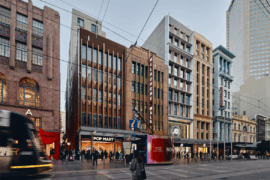
Merging two hotel identities in one landmark development, Hotel Indigo and Holiday Inn Little Collins capture the spirit of Melbourne through Buchan’s narrative-driven design – elevated by GROHE’s signature craftsmanship.
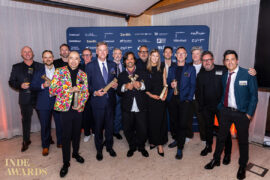
With the opening of the 2026 INDE.Awards program, now is the time to assess your projects, ensure photography is at hand and begin your submissions.

Former INDE Luminary LeAmon joins the Design Institute of Australia (DIA) following more than a decade as the inaugural Curator of Contemporary Design and Architecture at the National Gallery of Victoria (NGV).
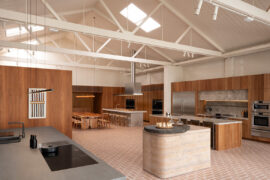
The Fisher and Paykel Melbourne Experience Centre by Clare Cousins Architects with Fisher and Paykel Design and Alt Group has been awarded The Retail Space at the INDE.Awards 2025. As a winning project, it redefines the possibilities of retail architecture by creating an immersive, material rich environment shaped by place, culture and craft.
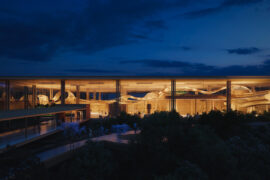
Recognised as winners at the INDE.Awards 2025, Enter Projects Asia in collaboration with SOM have received The Influencer award. Their work on Terminal 2 Kempegowda International Airport Interiors redefines the aesthetics of airport design through a monumental expression of biophilia, sustainability and craftsmanship.
The internet never sleeps! Here's the stuff you might have missed
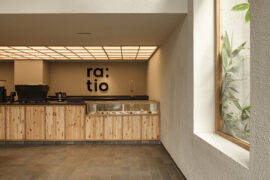
Ra:tio café blends calm interiors and lush outdoor spaces through VAL Atelier and The Pinewood Studio’s refined, contemporary design.
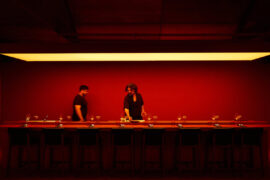
Located in the former Madam Brussels rooftop, Disuko reimagines 1980s Tokyo nightlife through layered interiors, bespoke detailing and a flexible dining and bar experience designed by MAMAS Dining Group.